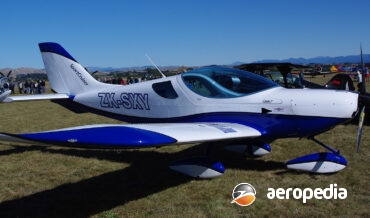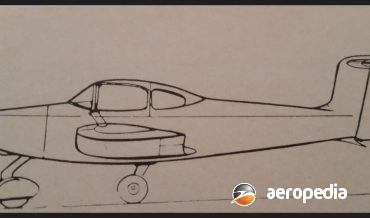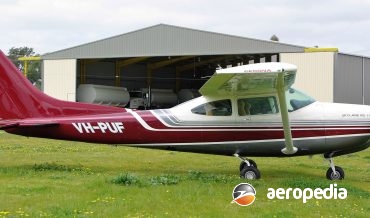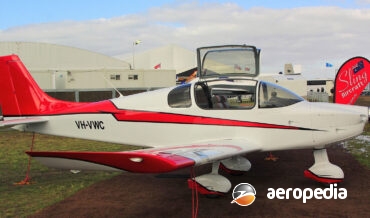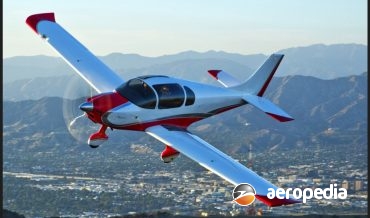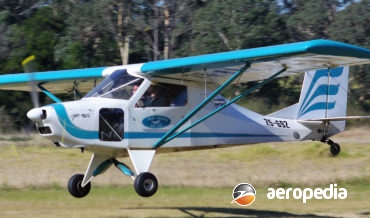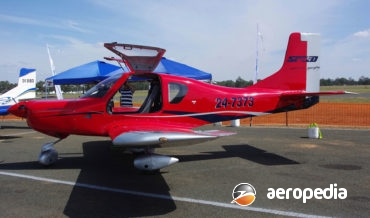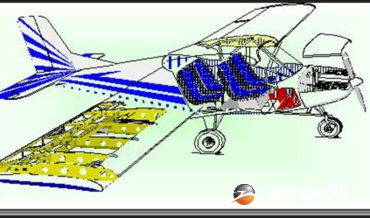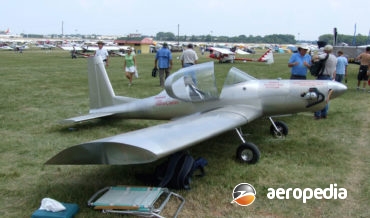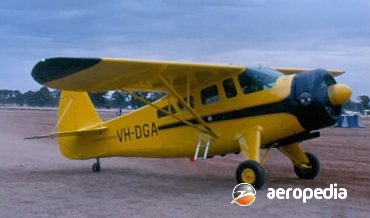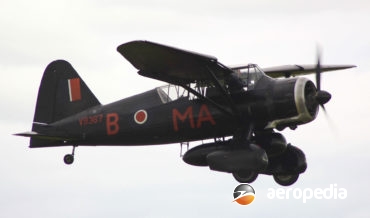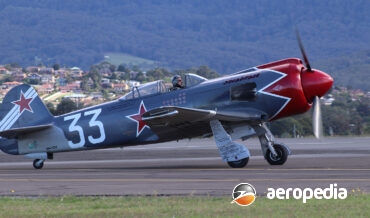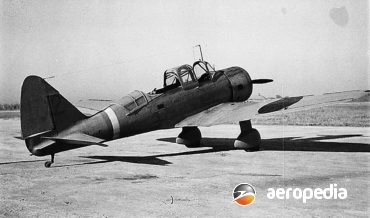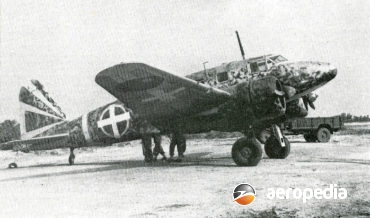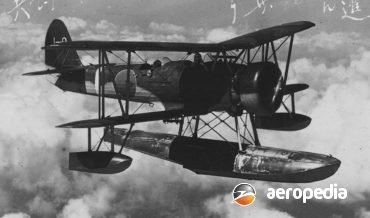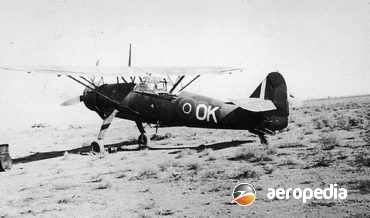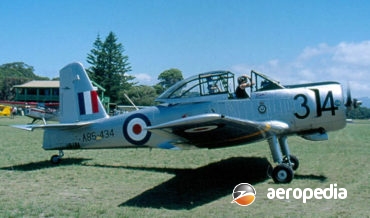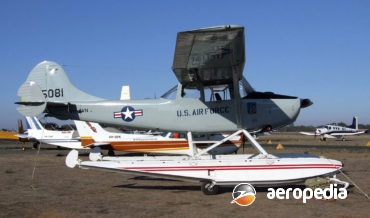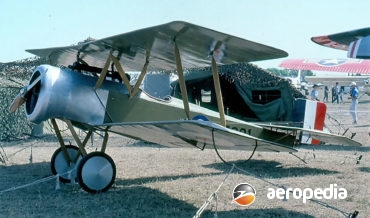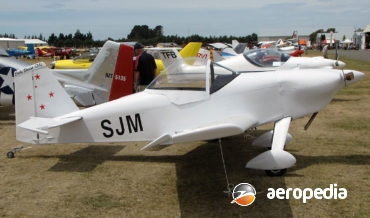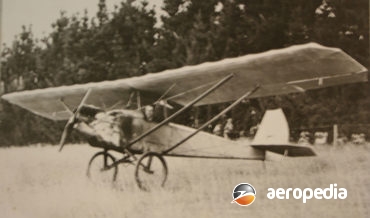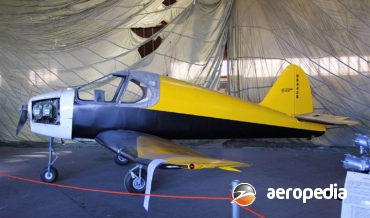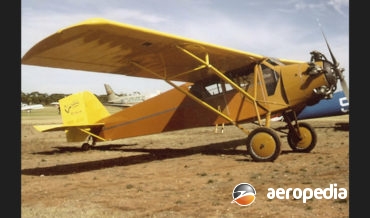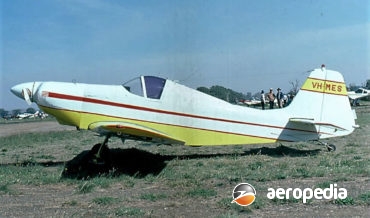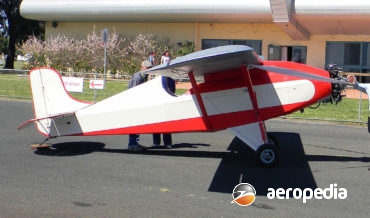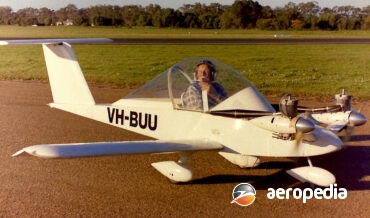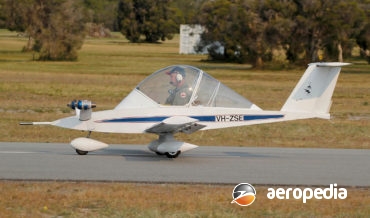All Contents
Contents
The SportsCruiser was designed in the Czech Republic as an all-metal low-wing, low maintenance aircraft and is built at the CZAW facility.
David C. Eyre
- June 26, 2020
In late 1957 the Royal Queensland Aero Club (RQAC) announced that at its instigation preliminary design work had begun
on a four-seat fully-aerobatic monoplane known as the PL-9, and that it was to be constructed at the Aero Clubs workshops at
Archerfield, Qld.
David C. Eyre
- March 23, 2020
Following the production of almost 17,000 Cessna 182 Skylanes, Cessna in 1977 decided to build a model of the well proven design with a retractable undercarriage, thus providing an aircraft with the proven reliability of its predecessor with the increased speed and fuel efficiency of a retractable undercarriage.
David C. Eyre
- March 23, 2020
Following the success of the Sling 2 the company moved to the construction of a four-seat variant using similar production methods, offering the aircraft in ready-to-fly form or as a kit-built aircraft.
David C. Eyre
- March 23, 2020
For years the four-seat, single-engine fixed-pitch propeller aircraft market was dominated by Cessna and Piper but in later years new designs have been placed on the market and one of these designs has come from Italian manufacturer, Tecnam.
David C. Eyre
- March 23, 2020
The Sling TSi first flew in 2018 and is produced by The Airplane Factory in South Africa and is a four-seat cabin monoplane fitted with a tricycle undercarriage developed from the company’s previous offering, the Sling 4.
David C. Eyre
- March 23, 2020
At the conclusion of fighting in the Spanish Civil War in April 1939 the Nationalist air arm possessed some 40 Messerschmitt Bf 109Bs and a number of Bf 109Es.
David C. Eyre
- August 24, 2019
Construction of the prototype of the Lightwing series began in 1984 and, initially known as the GA-55, it flew for the first time in June 1986 and was built as a ‘micro-light’ to meet ANO 101-28.
David C. Eyre
- August 24, 2019
The Lightwing Speed was designed and built by the Hughes Lightwing Co at Ballina, NSW to be produced in kit form for the light aircraft market, being produced in four basic versions, the two-seater known as the SP2000-S which is a lightweight models for registration under Recreation Aircraft Australia Regulations
David C. Eyre
- August 24, 2019
In late 1999 Hughes Engineering of Ballina, NSW, announced it proposed to put into production a four-seat kit aircraft designed by students from the University of New South Wales Engineering School, the latter having been commissioned to design the aircraft earlier that year.
David C. Eyre
- August 24, 2019
The Hummelbird was designed by Maurice ‘Morry’ Hummel, and is marketed by Hummel Aviation of Bryan, Ohio, in kit form as a light single-engine single-seat low-cost fast-build, high-performance aircraft.
David C. Eyre
- August 24, 2019
The Ultra Cruiser was designed by Maurice Hummel and is produced by Hummel Aviation for the ultralight and sporting aircraft market and is available in kit form or as plans only form but may also be obtained as a read-to-fly aircraft.
David C. Eyre
- August 24, 2019
The Hevle Classic is two-seat development of the Bowers or EAA Fly Baby which was designed as a simple, easy to fly, low-coast light aircraft for the amateur builder.
David C. Eyre
- August 24, 2019
The DGA-15 was the last of a series of high-performance monoplanes built by Howard Aircraft Corp at St Charles, Illinois in the United States.
David C. Eyre
- August 24, 2019
In 1934 under the direction of W E W Petter, to meet specifications 39/34, a design team at Westland produced the Lysander, the prototype of which (K6127) was flown on 15 June 1936 with a 627 kw (840-hp) Bristol Mercury IX engine in the hands of Harrold Penrose.
David C. Eyre
- May 19, 2019
The Yak-3U was a completely new design produced by the Yakovlev Design Bureau and used the light alloy stressed skin metal wing and tail surfaces of the latterly built Yak-3 fitted with the M-107 in-line V-12 engine but was built with a completely new fuselage fitted with a 14-cylinder two-row
David C. Eyre
- May 19, 2019
The Yokosuka E14Y was designed by Mitsuo Yamada of the Dai-Ichi Kaigun Koku Gijitsusho (the First Naval Air Technical Arsenal) as a small submarine-borne two-seat reconnaissance seaplane to operate on twin floats.
David C. Eyre
- May 19, 2019
In May 1937 a specification was issued for a two-seat co-operation aircraft for the Japanese Army and to meet this Mitsubishi put forward the Ki-35 and Tachikawa the Ki-36. In the event only Tachikawa received an order for a prototype to be built, the aircraft being designed by a team
David C. Eyre
- May 19, 2019
The Tachikawa Aircraft Co Ltd was founded in 1924 and was basically known for producing primary trainers for the Japanese Air Force from 1927. In 1940 work began on the Y-39, a low-wing twin-engine monoplane, which was built in a variety of variants to meet a number of needs.
David C. Eyre
- May 19, 2019
The Max Holste Company was founded in 1946 and built the Broussard and Super Broussard. In 1960 it entered into an agreement with Cessna of Wichita, Kansas, to produce aircraft for the European market and the new company became known as Reims Aviation.
David C. Eyre
- May 19, 2019
The Japanese Navy issued a specification in 1933 for the development of a two-seat reconnaissance aircraft to operate from vessels of the Imperial Japanese Navy. Three new types were entered in the competition, from Aichi, Kawanishi and Nakajima.
David C. Eyre
- May 19, 2019
When production ceased, some 15,000 North American NA-16s in a variety of versions had been built in the USA, or under licence in the Netherlands, Sweden, Japan, Canada, and, in Australia in much modified form as the Wirraway.
David C. Eyre
- May 19, 2019
The Societe anonyme des Aeroplanes Morane-Borel-Saulnier was founded in 1911 and commenced the construction of aircraft, one of the first, the Morane-Borel monoplane, making a flight from Paris to Madrid from 21 to 26 May that year.
David C. Eyre
- May 19, 2019
The Hs 126 was designed by Henschel Flugwerke AG at Schonefeld as an Army co-operation aircraft and was eventually used in the multi-role tactical aircraft role.
David C. Eyre
- May 19, 2019
The Winjeel (an Aboriginal word meaning young eagle) was designed to meet a 1948 specification for an aircraft to replace both the de Havilland Tiger Moth and the CAC Wirraway
David C. Eyre
- May 19, 2019
In 1950 the Cessna Aircraft Company of Wichita, Kansas, won a competition for the design of a liaison and observation monoplane for the US military services with the Model 305A, a development of the commercial Model 170 with similar wings, tail unit, and landing gear.
David C. Eyre
- May 19, 2019
Built in relatively small numbers, the Bv 141 reconnaissance aircraft was unusual in being of asymmetrical concept in that the pilot and crew were seated in a nacelle offset to starboard of a boom carrying the engine and tail assembly.
David C. Eyre
- May 19, 2019
The Bristol Scout was designed by Frank Barnwell, chief designer and engineer from 1915 to 1938 for the British & Colonial Aeroplane Company, being flown for the first time on 23 February 1914 by the Australia pilot, Harry Busteed.
David C. Eyre
- May 19, 2019
After the success of the Starlet, John Corby redesigned the aircraft to be constructed in metal, the new model becoming known as the CM-2 Kestrel, and after release of plans to home builders, construction of two examples commenced in New Zealand.
David C. Eyre
- May 17, 2019
Rene Couzinet was one of the early French aircraft designers, one of his aircraft, the Couzinet 10 (c/n 1 - Arc-en-Ciel) with three engines crossing the South Atlantic Ocean in 1933 on a return trip from Paris to Argentina.
David C. Eyre
- May 17, 2019
David Cecil Cross of Chatton, NZ, 24 years of age, described as a “technological experimenter” in 1933 built a small monoplane of his own design on a farm at Chatton, north of Gore, NZ. He was one of seven children.
David C. Eyre
- May 17, 2019
As noted in the Top Cub article, CubCrafters was founded in 1980 by James Richmond in Wisconsin to re-build and modify Piper PA-18 Super Cubs and similar aircraft and eventually to redesign the aircraft and upgrade it to meet customer requirements.
David C. Eyre
- May 17, 2019
The Culver Cadet series of light aircraft was designed by Al Mooney and built by the Culver Aircraft Company of Wichita Kansas as a two-seat small side-by-side all-wood construction light aircraft fitted with a 60-kw (80-hp) Franklin 4AC-176-D engine.
David C. Eyre
- May 17, 2019
One of a range of aircraft produced in the United States just before the Great Depression of the thirties, the Robin still sold well, with more than 700 examples produced.
David C. Eyre
- May 17, 2019
Mr Anton Cvjetkovic, a Yugoslav emigrant to the United States, began work in May 1960 on the design of a series of light aircraft, the first of which became known as the CA61.
David C. Eyre
- May 17, 2019
Designed essentially as a touring monoplane for the eastern-block countries, but also available for sale to western nations, the Meta Sokol was built by the Avia factory of the Czechoslovakian National Aircraft Industry at Chocen.
David C. Eyre
- May 17, 2019
The Super Ace was one of a number of light aircraft designed for sporting pilots in the United States by Orland G Corben. His first design, the Ace, was first marketed in 1923 and this was followed in later years by the Junior Ace, the Cabin Ace and the Super
David C. Eyre
- May 17, 2019
Mr John Corby, a Sydney based consultant aero engineer, designed the Starlet for an English competition conducted by Rollason Aircraft Ltd in 1964.
David C. Eyre
- May 17, 2019
The prototype of the Cri Cri series, known as the MC-10, was flown for the first time on 19 July 1973 powered by two 136-cc Rowena 6507J single-cylinder two-stroke engines, and was claimed to be the “smallest twin-engine aeroplane flying” and “the only aircraft able to lift a useful load
David C. Eyre
- May 17, 2019
The Cri Cri is a cantilever low-wing single-seat monoplane designed and produced in France which has been built by amateur builders around the world and is usually fitted with two JPX PUL 212 piston engines which provide 11-kw (15-hp), one fitted to each of the wings in tractor configuration.
David C. Eyre
- May 17, 2019
Recent Comments
Archives
Categories
- No categories
Categories
- No categories
Latest Posts
Newsletter

